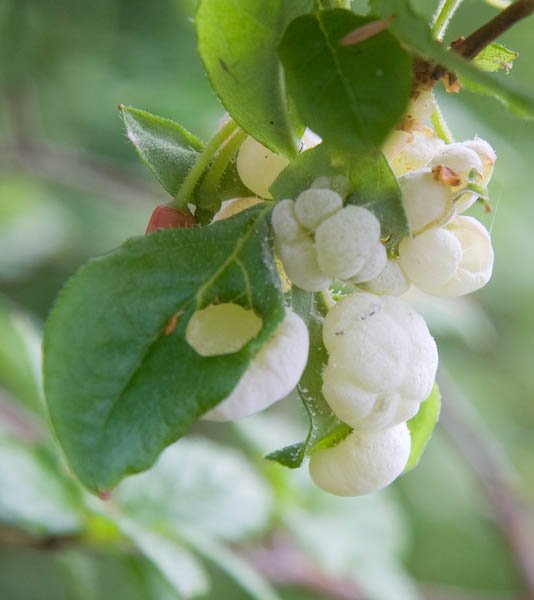
Ghosts’ Ears
Exobasidium vaccinii
I am not positive about the species identification, but I’m pretty sure the genus is correct and the information I found on-line regarding fungal infection of False Azalea suggested this species. Assuming the species identification is correct, apparently the fungal galls (shown here) were occasionally eaten by some Native groups.
Other Photos
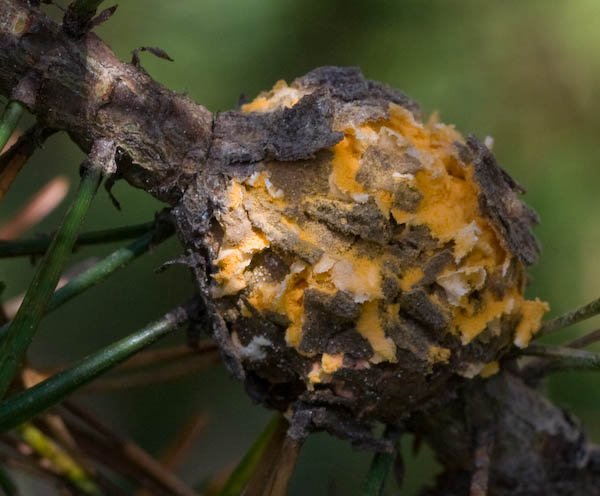
Western Gall Rust
Endocronartium harknessii
Unlike some other rusts, Western Gall Rust apparently does not need alternate hosts to complete its life cycle. It utilizes several different pine species, including our local version, the Shore Pine. This is all assuming that the identification is correct, and I’m not absolutely positive about that.
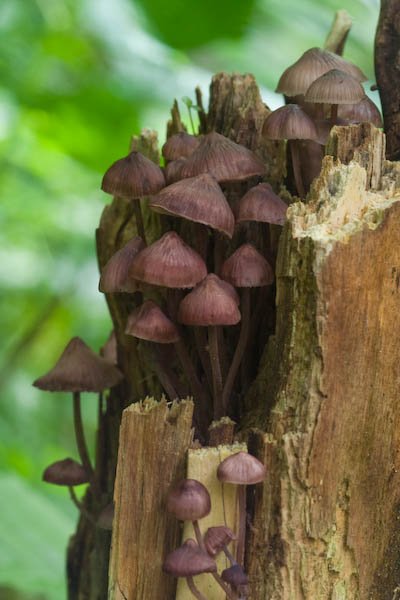
Unidentified Fungus
I suppose these almost qualify as “LBM’s” (Little Brown Mushrooms). They weren’t really all that small, however. The larger ones were probably around 10cm tall, if I am remembering correctly. They were growing out of the remains of an alder tree in Totem Park.
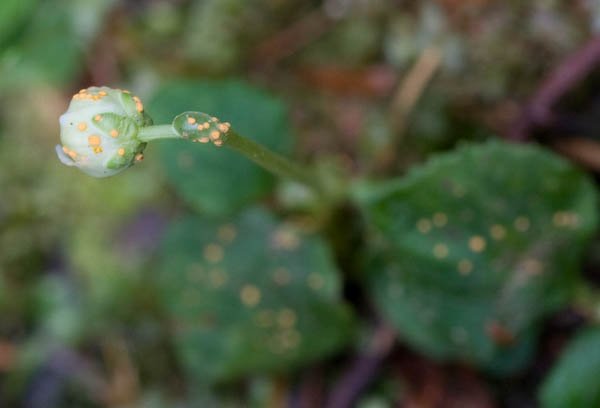
Coastal Spruce Cone Rust
Chrysomyxa monensis
The orange spots on this plant (notice that it’s also on the leaves), is a rust (fungus). Several of the plants had this fungal infection but still seemed to be developing, albeit with extra orange spots.
Apparently many rust fungi utilize more than one host to complete their life cycle. This particular species only uses Sitka Spruce (where it grows on the cones) and Single Delight (as seen here) for the various parts of its life cycle.
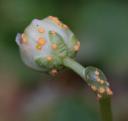
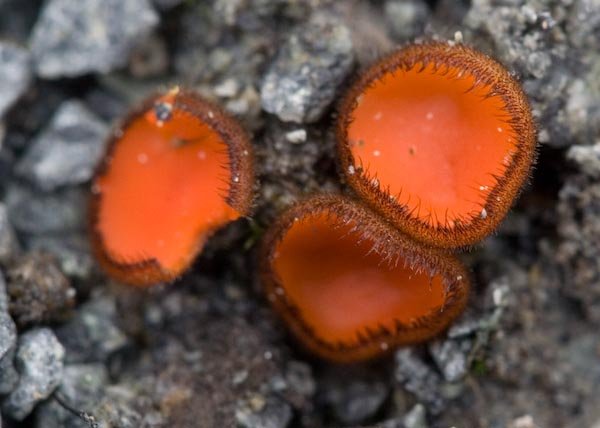
Eyelash Cup
Scutellinia scutellata
I have never noticed this small cup fungus before. With help from local fungi enthusiast Kitty LaBounty, I learned the identification. The common name seems apt. Although the main photo makes it look like the fungus is growing out of the gravel, it’s probably growing from a piece of buried wood, as I saw other cups close by on a nearly buried piece of wood.







